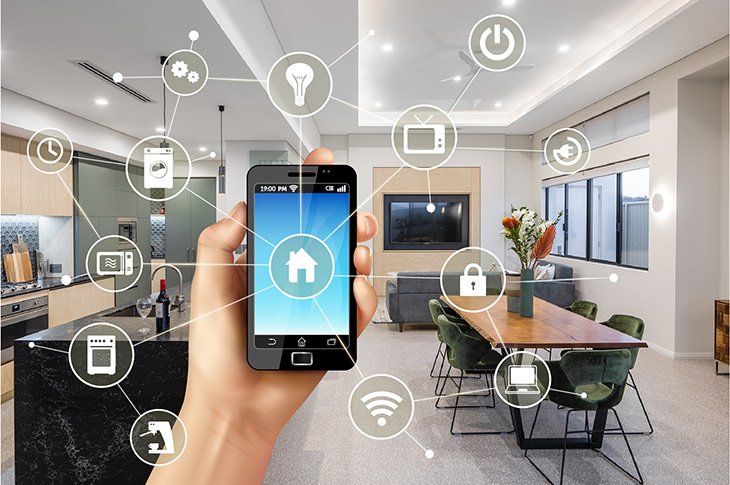Home Technology Solutions: Transforming Modern Living
Home technology solutions have rapidly evolved to redefine the way we interact with our living spaces. With the blend of convenience, comfort, and security, these solutions are no longer a luxury but a modern necessity. In this article, we delve into the core aspects of home technology solutions, including their benefits, types, integration strategies, and future trends.
Why Home Technology Solutions Are Essential Today
The rapid growth of technology in home environments has shifted from simple devices to interconnected ecosystems. The demand for home technology solutions has surged due to:
- Enhanced Convenience: With smart solutions, daily routines can be automated, reducing the time and effort needed for mundane tasks.
- Improved Security: Advanced surveillance systems, smart locks, and automated alerts provide enhanced safety.
- Energy Efficiency: Automated lights, thermostats, and energy-monitoring systems help in reducing power consumption, contributing to cost savings.
- Entertainment & Comfort: Smart TVs, connected speakers, and ambient lighting systems enhance leisure time at home.
These solutions merge seamlessly with daily life, making them indispensable in contemporary settings.
Exploring the Types of Home Technology Solutions
Home technology solutions encompass a wide variety of smart devices and systems. Key categories include:
1. Smart Home Automation Systems
These platforms integrate various smart devices into a cohesive system that can be managed through a single app or voice commands. Examples include Amazon Alexa, Google Home, and Apple HomeKit. They can control lights, thermostats, security systems, and more.
2. Smart Appliances
From refrigerators that manage your shopping lists to ovens that can be preheated remotely, smart appliances bring functionality and connectivity to kitchen and household management.
3. Security Solutions
Video doorbells, smart locks, and motion-detecting cameras allow homeowners to monitor their properties from anywhere in the world. They are integral for peace of mind and real-time security management.
4. Smart Lighting Systems
These systems enable customized lighting based on time, mood, or specific settings. Brands like Philips Hue and LIFX offer solutions that can be controlled via apps or integrated home systems.
5. Climate Control
Smart thermostats, such as Nest and Ecobee, automatically adjust home temperatures based on user behavior, improving both comfort and energy efficiency.
Integrating Home Technology Solutions: Best Practices
To create an effective smart home ecosystem, integration and planning are vital:
Plan Your Needs and Objectives
Before investing in smart solutions, homeowners should identify their priorities. Whether it’s security, energy savings, or entertainment, knowing your goals helps in choosing the right devices.
Choose Compatible Devices
Not all smart devices communicate with each other seamlessly. Using devices that support universal standards like Zigbee or Z-Wave helps create a unified system.
Centralize with a Hub
A smart hub can streamline operations, enabling multiple devices to work in sync. Systems like Samsung SmartThings provide extensive integration capabilities, connecting everything from lights to security cameras.
Regular Software Updates
Maintaining device security and performance requires timely updates. Neglecting this can lead to vulnerabilities and reduced functionality.
Professional Installation vs. DIY
While many systems are designed for easy self-installation, more complex setups may benefit from professional services to ensure optimal performance and troubleshooting.
Key Benefits of Implementing Home Technology Solutions
Energy Savings and Environmental Impact
Smart thermostats, energy-efficient bulbs, and smart plugs can reduce power usage, supporting eco-friendly living and cutting electricity costs.
Enhanced Home Security
Smart locks, video doorbells, and remote access security cameras provide round-the-clock protection, alerting homeowners about any suspicious activity instantly.
Increased Property Value
Homes equipped with integrated smart solutions tend to have higher market value. Buyers are more attracted to properties that feature state-of-the-art technology.
Customization and Comfort
Personalized settings for lighting, temperature, and sound help create a home environment tailored to individual preferences.
Remote Accessibility
With home technology solutions, users can control appliances, monitor security footage, and receive updates while away from home.
Popular Home Technology Solution Providers
Amazon Alexa and Echo
Pioneering voice-assisted smart systems, Amazon’s Alexa ecosystem connects with a multitude of smart devices, providing hands-free control over entertainment, lighting, and security.
Google Nest
From thermostats and security cameras to smart speakers, Google Nest products are known for their intuitive integration with Google Assistant.
Apple HomeKit
Apple users can benefit from seamless smart home management through HomeKit, which works with Siri and various Apple devices to manage a wide array of compatible smart products.
Philips Hue
Renowned for smart lighting, Philips Hue lights are versatile, offering colors, brightness adjustments, and automation features through a user-friendly app.
Ring and Arlo
Specializing in security solutions, these brands provide innovative video doorbells, cameras, and monitoring systems that prioritize homeowner safety.
Challenges and Considerations in Home Technology Solutions
Data Privacy and Security Risks
One significant challenge with home technology is the potential for data breaches. Devices that store personal information, if compromised, could pose risks. Ensuring secure passwords, using two-factor authentication, and buying from reputable brands can mitigate these risks.
Compatibility Issues
In a multi-brand environment, not all devices communicate well with one another. Researching compatibility and investing in systems that follow open standards is essential for a smoother experience.
Cost Concerns
High initial costs for purchasing and installing home technology solutions can deter some homeowners. However, long-term savings from energy efficiency and the added convenience often outweigh initial expenses.
Learning Curve
Adjusting to new technology can be challenging, particularly for less tech-savvy individuals. User-friendly interfaces and guides can help ease the transition.

Emerging Trends in Home Technology Solutions
Artificial Intelligence (AI) and Machine Learning
AI-powered systems learn user habits over time to provide customized recommendations and improve functionality. For instance, smart thermostats that “learn” daily routines help optimize energy consumption without user input.
5G Connectivity
With faster internet speeds, 5G allows for more seamless and robust interactions between smart home devices, making operations more efficient and reliable.
Integration of Augmented Reality (AR)
AR is making its way into home technology through features like virtual remodeling and smart displays that provide on-the-spot instructions for repairs or decor changes.
Sustainability-Focused Tech
Energy-saving devices and solutions that help manage resources responsibly are becoming more mainstream. Products like water-monitoring systems are examples of how technology aligns with sustainable living.
Voice Command Advancements
Future advancements in voice technology aim to provide more natural, conversational interactions with smart assistants, increasing efficiency and user comfort.
Future of Home Technology Solutions
The future holds exciting potential for home technology solutions. As more devices become compatible and smarter, we can expect homes that respond predictively to the needs of their inhabitants. From energy-independent homes running on smart grids to entirely AI-operated household tasks, the possibilities are boundless. Collaboration among tech companies will drive innovation, pushing boundaries and setting new standards in smart living.
Final Thoughts
The integration of home technology solutions into daily life offers unparalleled convenience, security, and sustainability. While challenges like cost and data security need to be addressed, the benefits vastly outweigh the drawbacks. As technology evolves, these solutions will become more accessible, making smart living an attainable reality for a broader audience.
FAQs
What are the essential components of a home technology solution?
Home technology solutions include smart automation systems, smart appliances, security systems, and devices for climate and lighting control.
How do smart home solutions improve energy efficiency?
They automate energy use, adjusting power consumption based on presence, time of day, and user settings, thereby saving on electricity bills.
Is professional installation necessary for smart home devices?
Not always; many devices are user-friendly and come with installation guides. However, complex systems may benefit from professional assistance for optimal integration.
What should I consider before investing in home technology?
Ensure compatibility between devices, plan your budget, and prioritize needs to avoid over-investing in unnecessary features.
How secure are home technology solutions?
Security depends on device quality, network protection, and user practices. Using reputable brands and strong security measures can minimize risks.
Can home technology increase my property value?
Yes, properties equipped with smart home technology tend to attract more buyers and have higher resale value due to their advanced convenience and security features.




